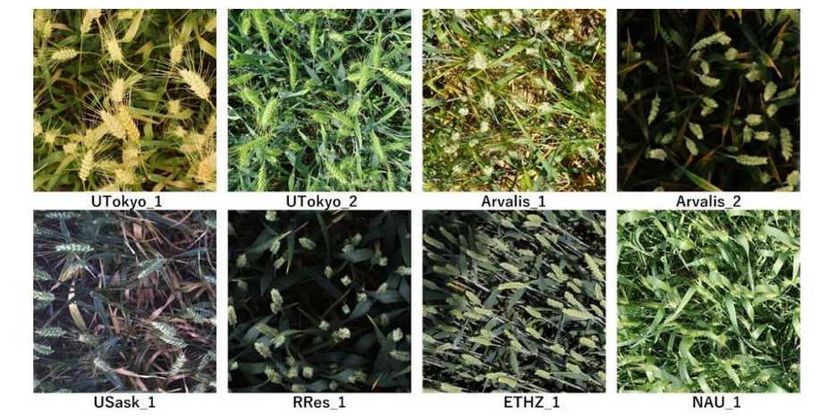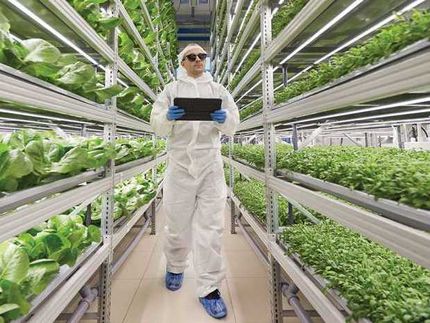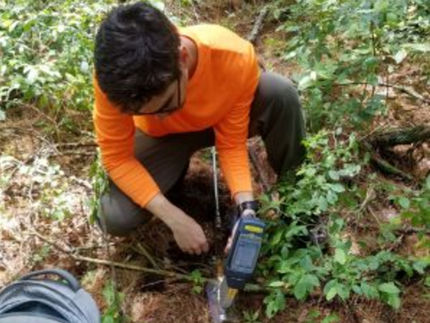Counting wheat heads for more ecology
Future Blog | Author: Prof. Achim Walter
To Achim Walter it’s clear: the budding artificial intelligence will decisively advance agroecology. But before we can harvest the fruits of AI, computers still have a lot to learn.

How many heads do you count? Wheat variation.
ETH Zürich / Professur für Kulturpflanzenwissenschaften
Over-fertilised fields, compacted soils, greenhouse gases and insect death – the list of problems in agroecology is both old and long. At the moment, drinking water is causing considerable concern as pesticides and high nitrate values threaten its quality.
The agricultural sector is in the dock. The plaintiff is a society that in principle calls for “organic for all”, but only spends an embarrassing six percent of its income on food (and largely doesn’t buy organic). The job of policy makers is to define clear new rules. And science? Its job is to objectively clarify the facts and identify solutions.
One step at a time
To do this, science needs sound tools. That includes not only chemical analysis, but also quantification of how successfully a particular population of crops develops under particular conditions. Or even what insects and herbage occur in what quantities at a particular site. This requires a lot of reliably collected data.
Artificial intelligence – more precisely, machine learning – has huge potential to collect the required quantity and quality of this kind of data. For example, soil properties, crop quantities, and numbers of pests can all be quantified from images.
Using this database, it’s possible in the next step to estimate the condition of the crops and ultimately determine how much water, nutrients and pesticides are needed at what location and at what time. However, experience shows that the first step is often the weakest link in this chain. A simple routine breeding task can exemplify this.
Example: counting wheat heads
Plant breeding involves developing suitable varieties using many characteristics. To breed wheat varieties that are disease-resistant or better adapted to the environment, it’s important to identify the successful – read: high-yield – variations in countless experiments under appropriate conditions. That means, among other things, quantifying how many heads they produce per unit area.
Counting heads is a simple but time-consuming task that researchers have long performed with their own hands and eyes – until this very day. You might think there should be a faster and more reliable way to do it these days with the help of smartphones and apps. Unfortunately not: heads can be difficult to distinguish in images because a leaf is covering them, they’re illuminated too strongly or too weakly, and on top of that, they look different from variety to variety.
Wanted: world’s best wheat head detector
Teaching a computer to do this is what numerous research groups are working on together as part of the “Global Wheat Head Detection Challenge”.1 They’ve annotated – that is, counted how many heads are visible – 4,700 pictures of wheat on multiple continents. This has been done for different varieties and farming conditions. A competition to build the best learning algorithm is now under way: which software will succeed in determining the correct number of heads with the greatest reliability? Specialists can participate, but so can any curious citizen who dares.
"In the future we will be able to precisely evaluate the consequences of management practices in the field using images captured by satellites, tractors and drones." Achim Walter
Competitions like this are common practice in image processing. They are sometimes based on citizen science projects2 and are more and more frequently successfully taken up in field ecology, for example in order to count wild animals.3
I’m convinced that if these methods can also be successfully incorporated in the agricultural sciences, plant breeding and agroecology will definitely benefit.4 It will be possible, among other things, to precisely evaluate the consequences of different management practices in the field using images captured by satellites, tractors and drones. We’ll be able to have a better-informed discussion than today about how agriculture should develop in the future.
Other news from the department science
Most read news
More news from our other portals
See the theme worlds for related content
Artificial intelligence (AI) for food and beverages
Artificial intelligence (AI) is optimizing the food and beverage industry through automated quality control and more accurate demand forecasting. AI plays a particularly important role in product development by analyzing taste preferences and market trends. This allows new products to be developed that are better tailored to consumer needs, increasing efficiency and customer satisfaction.

Artificial intelligence (AI) for food and beverages
Artificial intelligence (AI) is optimizing the food and beverage industry through automated quality control and more accurate demand forecasting. AI plays a particularly important role in product development by analyzing taste preferences and market trends. This allows new products to be developed that are better tailored to consumer needs, increasing efficiency and customer satisfaction.

















































